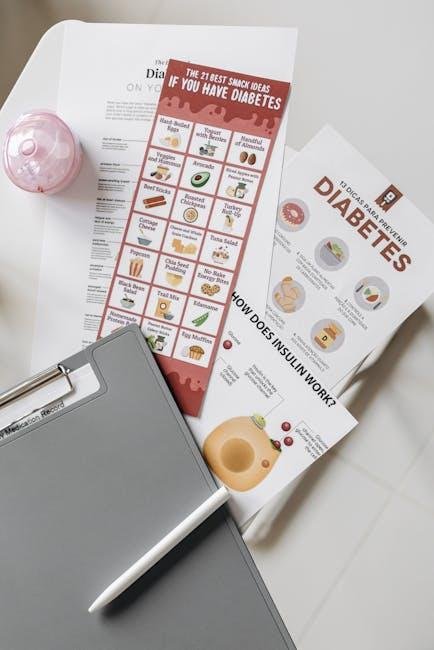In today’s world, where packaged foods line every grocery store shelf, understanding nutrition labels has become more important than ever. These small panels of information can help you make healthier choices, manage dietary restrictions, and better understand what you’re feeding your body. However, many people find nutrition labels confusing or overwhelming. This simple guide will break down the essentials of reading nutrition labels effectively, empowering you to decode the information quickly and make informed decisions with confidence. Whether you’re a nutrition novice or just need a refresher, this article will help you navigate the details with ease.
Table of Contents
- Understanding Serving Sizes and Daily Values for Better Portion Control
- Decoding Macronutrients and Micronutrients to Meet Your Dietary Needs
- Spotting Hidden Sugars and Unhealthy Fats to Make Healthier Choices
- Interpreting Ingredient Lists to Avoid Allergens and Additives
- Insights and Conclusions
Understanding Serving Sizes and Daily Values for Better Portion Control
When you’re scanning nutrition labels, it’s crucial to recognize that the information provided is based on specific serving sizes, which might not align with the portions you actually consume. These serving sizes reflect a standardized amount defined by the manufacturer or regulatory guidelines, but your portion might be larger or smaller. Paying attention to the serving size helps ensure you’re accurately tracking your intake of calories, fats, sugars, and other nutrients. For instance, if a label indicates 150 calories per serving and you consume two servings, you’re actually taking in 300 calories. Always compare your real portion to the serving size listed for effective portion control.
Another key point is understanding the Daily Values (%DV) shown on labels, which are based on a 2,000-calorie diet and can guide you in meeting your nutritional goals. These percentages tell you how much a nutrient in a single serving contributes to your daily requirement. For example, a label showing 20% DV for calcium means that one serving provides 20% of your daily calcium needs. When managing your diet, focus on nutrients like saturated fat, sodium, and added sugars, aiming to keep their %DV in check. Using this knowledge, you can balance indulgence and nutrition more mindfully, making informed choices one meal at a time.
- Always measure or estimate your portions. Use tools like measuring cups or a food scale for accuracy.
- Compare the nutrient content per serving to your daily goals. Adjust intake accordingly.
- Look beyond calories. Focus on quality nutrients like fiber, vitamins, and minerals.
Decoding Macronutrients and Micronutrients to Meet Your Dietary Needs
Understanding the role of macronutrients and micronutrients is essential for making informed choices at the grocery store. Macronutrients – carbohydrates, proteins, and fats – supply your body with energy and the building blocks for growth and repair. When scanning a label, focus on the quantity and type of these nutrients. For example, prioritize complex carbohydrates and healthy fats like omega-3s while limiting added sugars and saturated fats. Proteins, meanwhile, support muscle maintenance and immune function, so check if the product offers a complete protein profile or consider pairing it with other foods to get all essential amino acids.
Micronutrients, though required in smaller amounts, are equally important, encompassing vitamins and minerals that support everything from bone health to blood circulation. While nutrition labels may only list selected micronutrients such as Vitamin D, calcium, iron, and potassium, knowing which ones are present can help you gauge the product’s nutritional value. Keep an eye on % Daily Value (%DV) figures as a quick guide: a %DV above 20% means the food is rich in that nutrient, while below 5% indicates a low contribution. Balancing these macro and micronutrients in your diet can lead to better energy levels, improved wellbeing, and long-term health.
Spotting Hidden Sugars and Unhealthy Fats to Make Healthier Choices
When navigating nutrition labels, it’s crucial to look beyond just the obvious sugar and fat content. Many products contain hidden sugars under names you might not immediately recognize—like maltose, dextrose, or high-fructose corn syrup. These additives can significantly increase the calorie count without adding nutritional value. Pay close attention to the ingredients list, prioritizing products that list sugars lower down, as ingredients are arranged by quantity from highest to lowest. Similarly, some products may use terms like “natural flavors” to mask added sugars, so remaining vigilant is key to avoiding unwanted spikes in blood sugar.
Unhealthy fats can be just as sneaky, often hiding as partially hydrogenated oils or trans fats, which contribute to heart disease and inflammation. Even if a label claims “0g trans fat,” check the ingredients for hydrogenated oils—since regulations allow traces below 0.5g to be rounded down. Instead, look for healthier fat options such as monounsaturated and polyunsaturated fats, commonly found in nuts, seeds, and fish. Watching out for these details helps you make smarter choices and supports a balanced diet that fuels your body efficiently.
- Check sugar aliases: glucose, sucrose, syrup, juice concentrates.
- Scan for recurring sugars: multiple sugars listed separately reflect high sugar content.
- Identify unhealthy fats: watch for ‘partially hydrogenated oils’ and limit saturated fats.
- Prioritize whole foods: minimal, recognizable ingredients often indicate healthier options.
Interpreting Ingredient Lists to Avoid Allergens and Additives
When scanning the list of ingredients, the key is to identify not just what is included but also what is omitted—especially if you have allergies or sensitivities. Ingredients are typically listed in descending order by weight, so the first few items are the most significant components of the product. Always look out for common allergens such as milk, eggs, peanuts, tree nuts, soy, wheat, fish, and shellfish. Many labels will highlight these allergens in bold or under a separate allergen statement, making them easier to spot. Additionally, unfamiliar names in the list might actually be additives or preservatives disguised under technical terms, so familiarizing yourself with common additive names can help you avoid unwanted chemicals.
It’s also beneficial to check for hidden additives that might trigger sensitivities or cause unwanted reactions. Ingredients like monosodium glutamate (MSG), artificial colors, flavors, and sulfites are often used for preserving flavor or extending shelf life but can be problematic for some individuals. Creating a personal checklist of ingredients to avoid can simplify shopping and meal prep. When in doubt, a quick online search or using a smartphone app can reveal more about any ambiguous ingredients, empowering you to make safer, healthier choices without sacrificing convenience.
Insights and Conclusions
Incorporating the habit of reading nutrition labels can truly empower you to make healthier choices with confidence. By understanding what to look for—like serving sizes, calories, and key nutrients—you’re better equipped to navigate the often confusing world of packaged foods. Remember, it’s not about perfection but progress; every informed choice brings you one step closer to a balanced diet that supports your well-being. Keep this simple guide handy next time you’re at the grocery store, and let nutrition labels be your helpful allies on your journey to healthier eating.
Related Products
-
Sale!
OGX Renewing + Argan Oil of Morocco, Cold-Pressed …
Beauty Original price was: $10.69.$7.97Current price is: $7.97. -
Raise Them Well Mom Multi+ Daily Multivitamin for …
Mom $27.99 -
Sale!
Men’s Bomber Jacket Fashion Stylish Lightweight Wi…
Clothing Original price was: $39.99.$32.99Current price is: $32.99.







